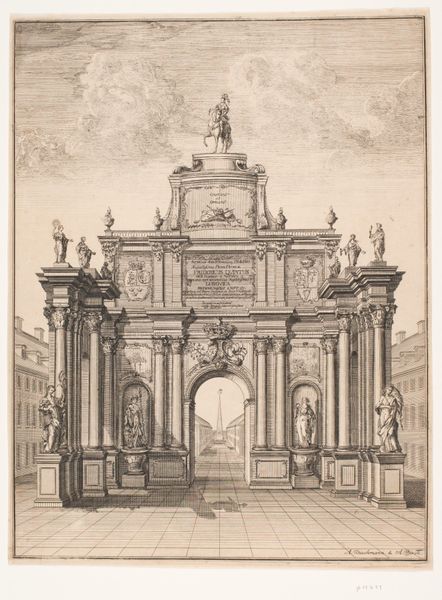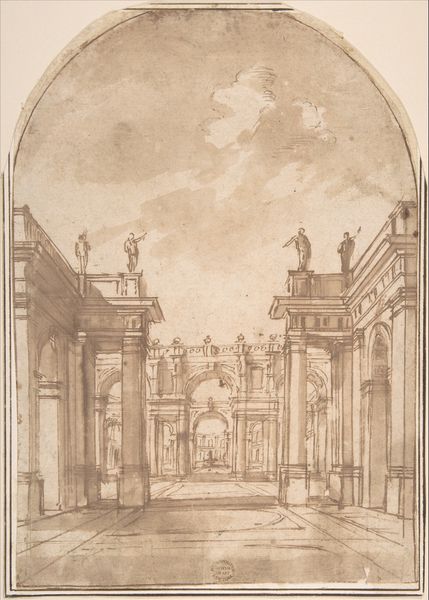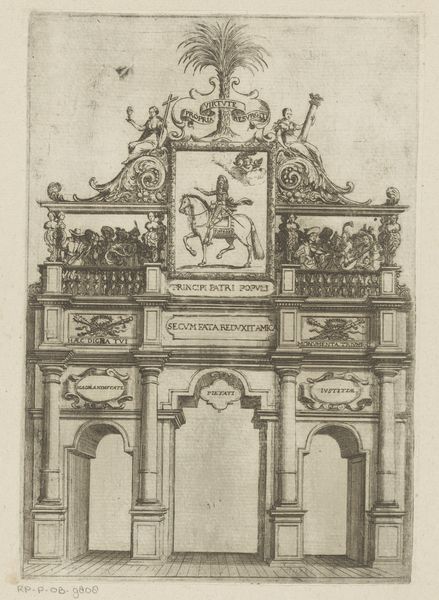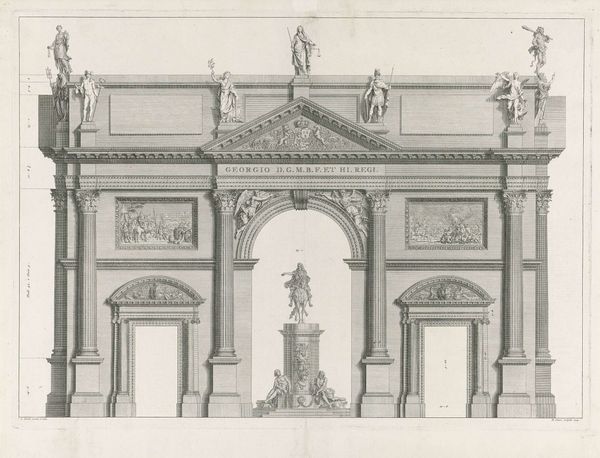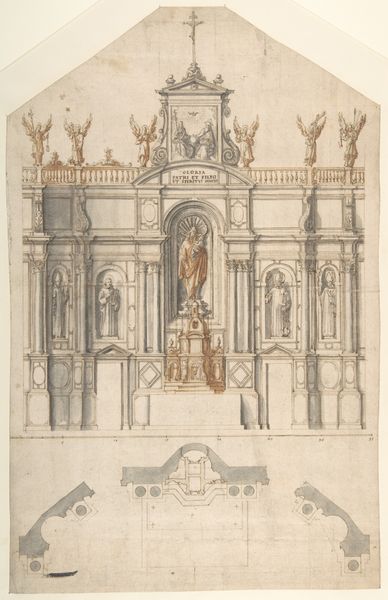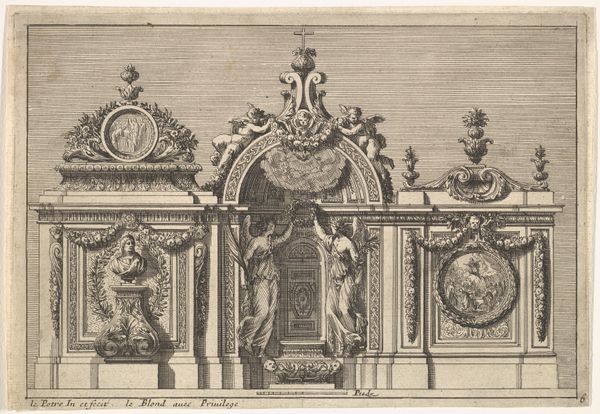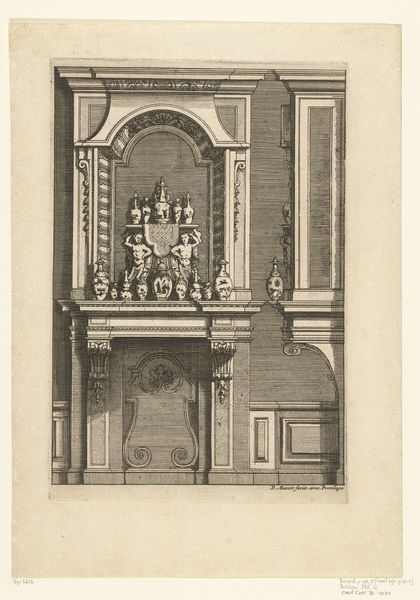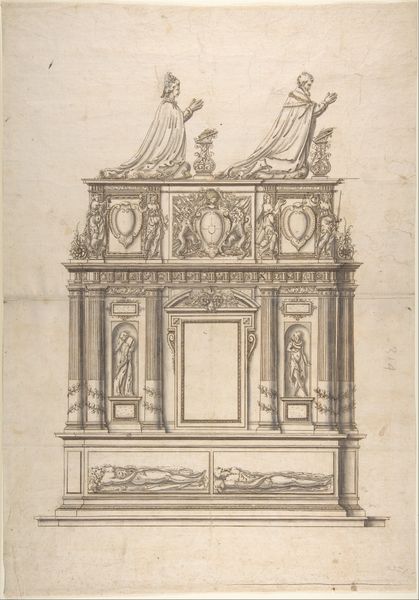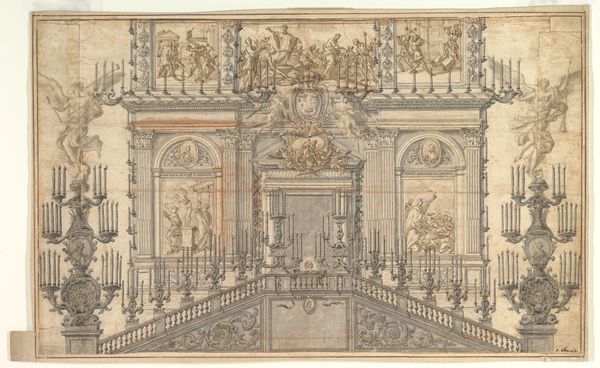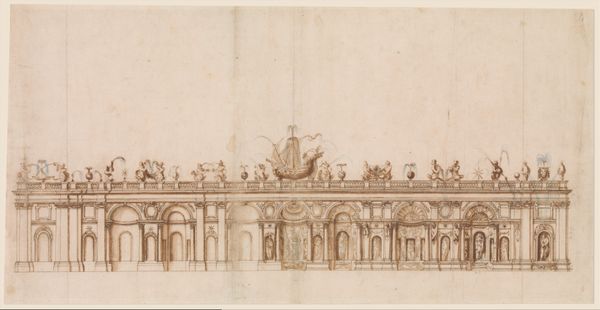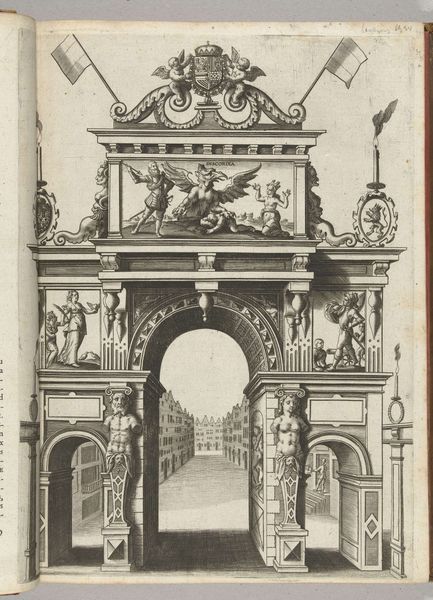
Design for a Triumphal Arch with Three Arches 16th century
0:00
0:00
drawing, architecture
#
architectural sketch
#
drawing
#
form
#
11_renaissance
#
geometric
#
arch
#
italian-renaissance
#
architecture
Dimensions: sheet: 10 13/16 x 14 5/8 in. (27.5 x 37.1 cm)
Copyright: Public Domain
Editor: Here we have an anonymous 16th-century drawing, "Design for a Triumphal Arch with Three Arches," housed at the Metropolitan Museum of Art. The sepia tones and precise lines give it an almost dreamlike quality. How do you interpret this work, considering its function as a design? Curator: Well, immediately my attention is drawn to the drawing's *process*. Think of the labor involved. An architect, or someone aspiring to be, painstakingly creating this not as art for a wall, but as a proposal. Each line, each measurement meticulously rendered. Were these drawings presented to patrons? How were these architectural sketches consumed, both literally and figuratively? Editor: That's a great point, focusing on its role in society! So, it's not just about the beautiful design, but about who commissioned it and why? Curator: Exactly! The arch, with its Roman motifs and sculptural details, represents power and authority. Who were they intending to commemorate with this triumphal arch, and more importantly, what materials would have gone into actually constructing it? What quarries, what workshops, what human effort, slave or free, would be exploited to manifest it? It's all interconnected, don't you think? Even the act of drawing; what type of ink, paper were used and the social implications of this design. Editor: So by examining those factors we understand the bigger socio-economic picture. I’d only been considering it as, well, a pretty picture, and I hadn't really considered the production process at all! Curator: That’s understandable. By viewing artworks as products of specific social conditions and material processes, we can truly dig in, beyond the purely aesthetic appreciation of them. Editor: Absolutely. Now, when I look at it, I am more interested in its story of fabrication, the laborers involved, and the statement behind the work. Curator: Precisely, this view encourages a far deeper and richer appreciation for not just its look, but of this design within society.
Comments
No comments
Be the first to comment and join the conversation on the ultimate creative platform.
